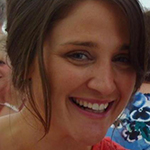This is probably going to be the last update from our team in its current state. In mid-March we’ll be moving from King’s Gate to the Daysh Building. At the same time we’ll be welcoming three new members to the team. Read on to find out what we’ve been up to recently and how these changes affect our plans for the next few weeks.
Go Mobile programme
Jane and Lisa are continuing to tag up the Careers website to get it ready to migrate to T4 next week.
Linda got back into proofing and went through two sites: Institute for Agri-food Research and Innovation and the School of Electrical and Electronic Engineering. Both are due to go live in the next week.
Design and technical developments
The tech team are currently supporting technical work needed for the Careers and Study Abroad website migrations.
We have received the final batch of updated virtual tours, giving us 80+ tours optimised for use on mobile devices. You can see some of the new tours on the Accommodation website and the Virtual Tours website.
Campaigns and other developments
Lisa has been making content updates to the Study website, and adding some Google analytics tracking to the Open Day website.
Emma B has been hard at work organising the team’s impending move to the Daysh Building as well as providing support for various smaller web projects around the Hass Faculty. She’s currently building a new site for the Newcastle Centre for Research on Entrepreneurship, Wealth and Philanthropy (REWP). Emma’s also spending time thinking about the best way to move the team to an Agile way of working – more info about this to come!
Steve has been developing some web content for the SAgE Faculty around the SAgE Professionals website and for two events: MINT Day and Makeup Your Mind.
Planning for Clearing is underway – it barely seems like five minutes since we were wrapping up the last campaign. The Clearing site is moving into T4 this year and NUIT are working on a new database to support the phone lines.
Training and support
Lisa wrote a blog post about editing other people’s content – take a look if you’re struggling to edit some complex content for your website. And Linda’s written up the blog round up for February – it’s heading your way on Monday.
Anne’s delivered workshops in both T4 CMS Basics and Contribute this week. She’s also been working with Staff Development Unit and NUIT to develop the training administration process for our new Training Room.
Emma C delivered another media management session this morning to a packed room of editors from schools in the Science, Agriculture and Engineering faculty, Marketing and Student Recruitment, Corporate Affairs and Careers.
Plans for the next few weeks
Anne will be working with SDU to setup some of the systems we’ll use to manage the training bookings for our new Training Room.
Emma C is working on the final edits to the new International websites ahead of the planned go live date in early March.
Linda’s preparing inductions for our new team members. And we’re all having a clear-out in readiness for our move to the Daysh Building. It’s amazing how much stuff even a digital team can amass over the years.

 Anna Jenner is a Student Recruitment Officer in the Student Recruitment Team.
Anna Jenner is a Student Recruitment Officer in the Student Recruitment Team.